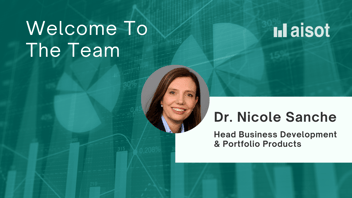Why Scaling AI for Asset Management Matters
With low margins and increasing competition transforming the opportunity set for asset managers/owners, successful AI integration in the investment decision process is key. According to “The Future of Asset Management” by Accenture, 56% of asset managers think investment strategies offered will significantly change in the next five years due to new investor preferences. Personalized strategies, including ones that incorporate thematic investing and ESG, will require AI at scale to produce stable risk/reward ratios. The latter requires bringing together a highly specialized, interdisciplinary team of data scientists, mathematicians or physicists, software engineers, MLOps and quantitative finance specialists. Due to resource constraints, specifically small and medium sized asset managers struggle to develop, deploy and maintain their AI models reliably and efficiently. aisot’s mission is to democratize access to Machine Learning (ML) for these players without giving up competitive advantages.
The process of bringing machine learning and artificial intelligence (AI) to production is one of the key challenges in that context. The integration of advanced, real-time AI solutions into day-to-day operations is a standard that currently only the largest financial institutions can fulfill and afford. According to VentureBeat and Deloitte, only 1 in 10 AI models make it into production today. In other words, 90% of all ML models developed end up being not deployed. This number is a stark contrast to more than 90% of tech executives who believe that AI will be at the center of the next technological revolution.
The reasons for the extremely low deployment rate of ML models are manifold: one of the main problems with ML is that you can’t just throw money at a problem or put a technology in, and success comes out the other end. The development of ML models is non-trivial and both logistically and algorithmically highly complex. ML models can be compared to living organisms. Once developed and deployed, they are challenging to maintain and train. Asset managers/owners often attempt siloed approaches to implement ML models, while lacking digital maturity, skills and transparency to run complex ML deployments and techniques. This does not only lead to poor outcomes in terms of performance and risk mitigation but also widens the gap between powerful financial players capable of running successful ML operations and smaller players with less resources and access to talent.
On top of this, siloed ML operations lead to excessive energy consumption due to high levels of computing power needed to keep MLops running and up to date. All of this underscores the importance of providing solutions that allow to scale ML ops within and across individual companies. Harnessing data, ML models and computing power - without losing a potential competitive edge - will greatly help to make ML operations more accessible to a variety of players as well as to reduce energy consumption as compared to a scenario in which virtually all market participants are building their own ML operations. While most hedge funds and larger asset management firms today are highly protective of their own proprietary ML models, such a siloed approach will lead to inferior results for smaller and medium sized asset managers since scaling ML is a challenging process. If a ML model works great in a R&D environment doesn’t mean that it’ll work in production. In addition, modularity of machine learning models doesn’t always work the same at large scales as it does on small ones. Finally ML models that are widely accessible and have been trained in various settings and environments tend to be more robust and successful.
This is only a brief overview of why scaling ML/AI matters, particularly in asset management. There are various use cases asset and wealth managers can take advantage of with aisot’s AI engine, including portfolio optimization, asset allocation optimization or stock analysis. If you’re curious how to get started with AI within your organization, please reach out to us here.


